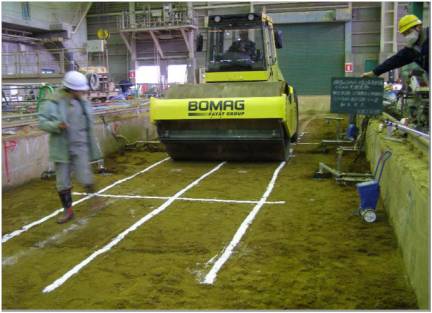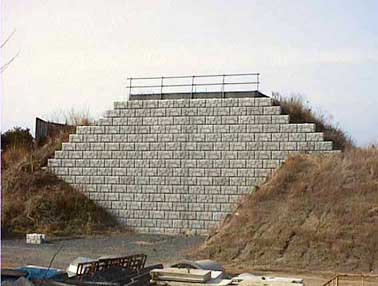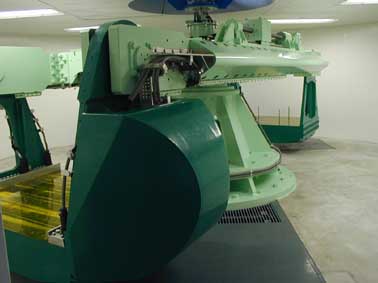Earthwork test facilities
 |
The earthwork test facilities include four types of concrete pits. Various
full-scale earthwork experiments can be carried out at the concrete pits,
including tests to confirm solidification by chemical grouting and compaction
machine tests.
|

Embankment compaction experiment
|
- Mountain retaining wall test site (8m wide x 15m long x 4m deep)
- Large-sized earth tank pit x 1 (8m wide x 15m long x 4m deep)
- Medium-sized earth tank pits x 2 (4m wide x 8m long x 4m deep)
- Small-sized earth tank pits x 2 (4m wide x 4m long x 4m deep)
- Longer-type earth tank pit x 1 (5m wide x 40m long x 4m deep)
- Overhead traveling cranes (15t/1t, top running, double rail)
|
| Top of page |
Earthwork management test site |
The earthwork management test site is used to construct structures whose behaviors are difficult to predict in model tests, e.g. earth retaining structures and foundation structures, to examine long-term stability and test new construction methods and execution management method.
Facilities include gantry cranes (15t/5t) and a static loading machine (max. load of 200tf) in place.
|
 |
| Geotextile reinforced retaining wall |
| Top of page |
|
Medium-sized centrifuge test facility
 |
This facility is used for studying ground behavior in a centrifugal field by attaching a geometrically-scaled ground model to the centrifuge test device which provides centrifugal acceleration.
Compared with tests in a gravitational field, this test method assumes a clearer similarity law and can reproduce a stress state equivalent to that in a full-scale case.
- Effective turning radius: 3.5m
- Maximum centrifugal acceleration: 140G
- Maximum load: 1000kg
|
 |
Medium-sized centrifuge test device
|
| Top of page |
|
Test facility for improving the construction site working environment
 |
This experimental tunnel is used for full-scale measurement of the concentration and behavior of dust generated and scattered during such works as tunnel construction, chipping work on deteriorated concrete and concrete spraying.
The tunnel is 8m high, approx. 13m wide and 100m long (the concrete portion being 30m) with a sectional area of 80m2. There are a fan blower (max. blowing capacity: 1500m3/min) and a dust collector (max. air volume: 1800m3/min).
|
 |
 |
| Exterior of the experimental tunnel facility |
Excavating a bedrock model made of concrete |
|
| Top of page |
|
All inquiries to:
Construction Technology Team,
Geology and Geotechnical Research Group,
The Public Works Research Institute
1-6
Minamihara, Tsukuba City, Ibaraki Prefecture, 305-8516
TEL
029-879-6759
FAX 029-879-6799 |
| Copyright ©
Public Works Research Institute |
|